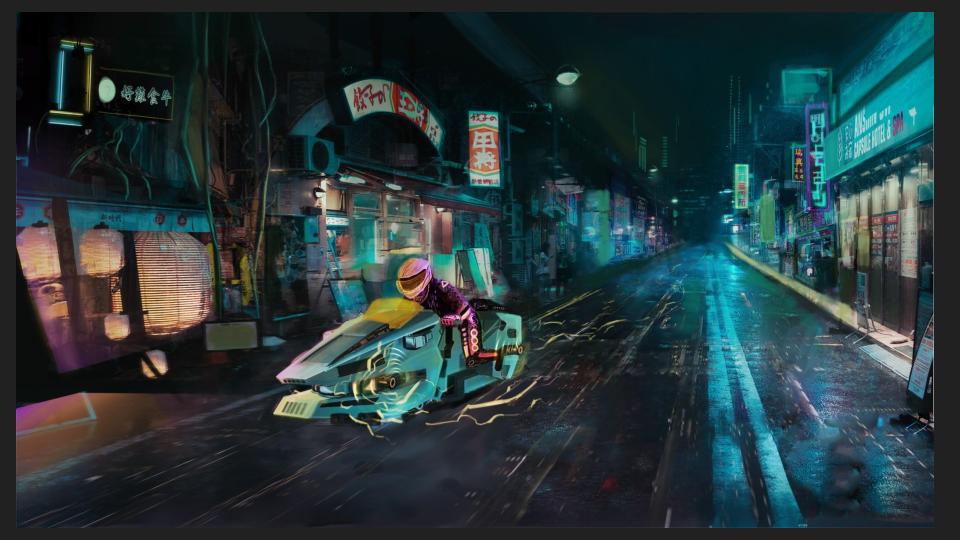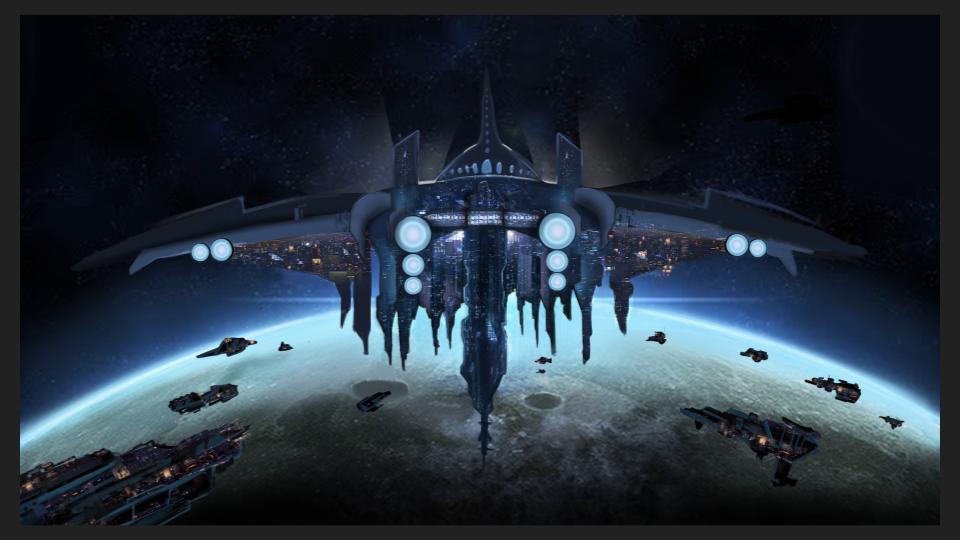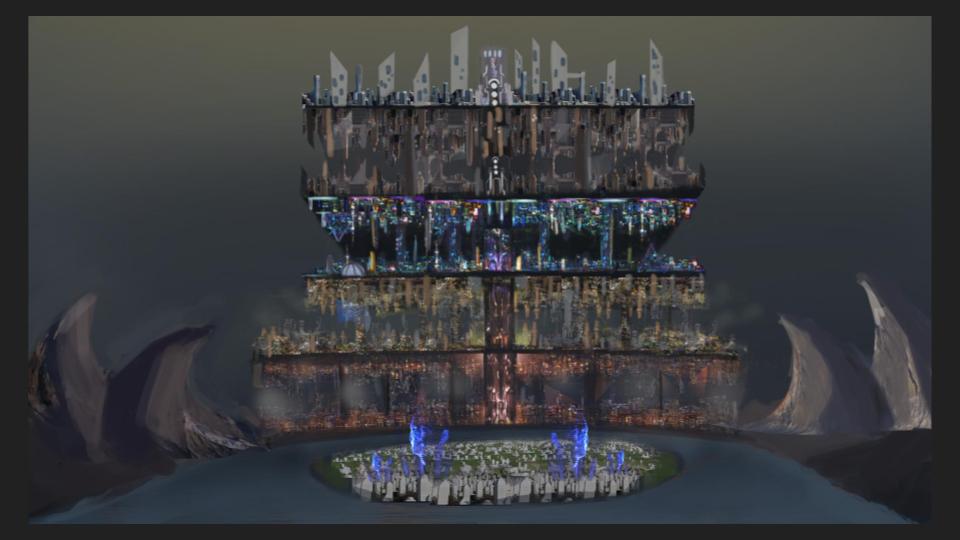Zenith
I want to become a concept artists for videogames or films. I found out about concept artists during my junior year explorations project. I learned how to use photoshops various tools and how to implement photos inside my art. I found this process so exciting I kept on researching on different tips and techniques. I also started to build a list of my favorite artists. One artist I particularly liked was Finnian Macmanus. He is a concept artist, known for using 3D blackouts in his art. He creates 3D blockouts using virtual reality sculpting programs. This inspired me to create my own art using 3D blackouts and painting over. Additionally, at the time, I was creating concept art for an author writing a science fiction book series. I decided to make this my zenith project, that I could show my learning process in 3D and in photoshop.
My client asked for 3 final paintings. He wanted art for a futuristic city, a flying motorcycle, and a fleet of spaceships. I was excited by these prompts because there is so much to explore. There are almost no rules when drawing science fiction. Nobody knows how the future will look like, and depicting these subjects leads to endless possibilities.
My process started by creating sketches for my client. My client would then choose the sketches he preferred and I would keep on expanding on them. After we reached a final sketch, I would start creating 3D assets. I used the 3D software “Blender.” Blender is free and it only took me a few hours to figure out how to do the basics for what I needed. The 3D assets were not made to be perfect. They are there to assist me with proportions and perspective. It also allows me to move the camera around until I find an angle I can paint. I will then take exports those angles as images and import them into Photoshop. I will pick the best picture and start painting over it. This painting over process is the hardest to explain. I have tried to watch tutorials and watch professional artists paint in Photoshop. I was searching for a step by step way to do successful paint over. However, there is no step by step process. No artist has a specific set of ways to do something. It’s more based on intuition and experimenting. Some artists start by adding photos and blending them into the 3d model and start painting afterward. While other artists start painting and add photos much later. While others would do both at the same time. This process is like someone scrapbooking, adding photos everywhere while painting, and drawing over it. There are endless editing possibilities, and sometimes the hardest part is deciding when you are done, or when its time to start over.
Some of the challenges I experienced were mainly working with a client. Working with a client is difficult. You have to imagine what they are thinking and put it on paper. My client has a great imagination and I can visualize lots of the aspects he wanted in his art. However, I wish I spoke up about the aspects that I didn’t believe could work. Another hardship is redoing the same thing over and over. Clients will decide much later in the painting process that they need something changed. That there needs to be a different color. Or we need to take away a certain part. Or add something in. Try to keep your art as organized as possible. Having parts of the painting on different layers helps a lot. That way if you are asked to change something, you don’t have to repaint the whole painting.
Overall I learned lots of skills during this project. I learned how to be flexible with my client, communicate ideas clearly, and use technology to create solutions. My Zenith project and Freestyle taught me that lots of the things we see in our media are not that complicated. If you want to learn something you can. It will take several failures before your first success, but as long as you focus on what you learned and not the final product you can find value in almost anything you do.


